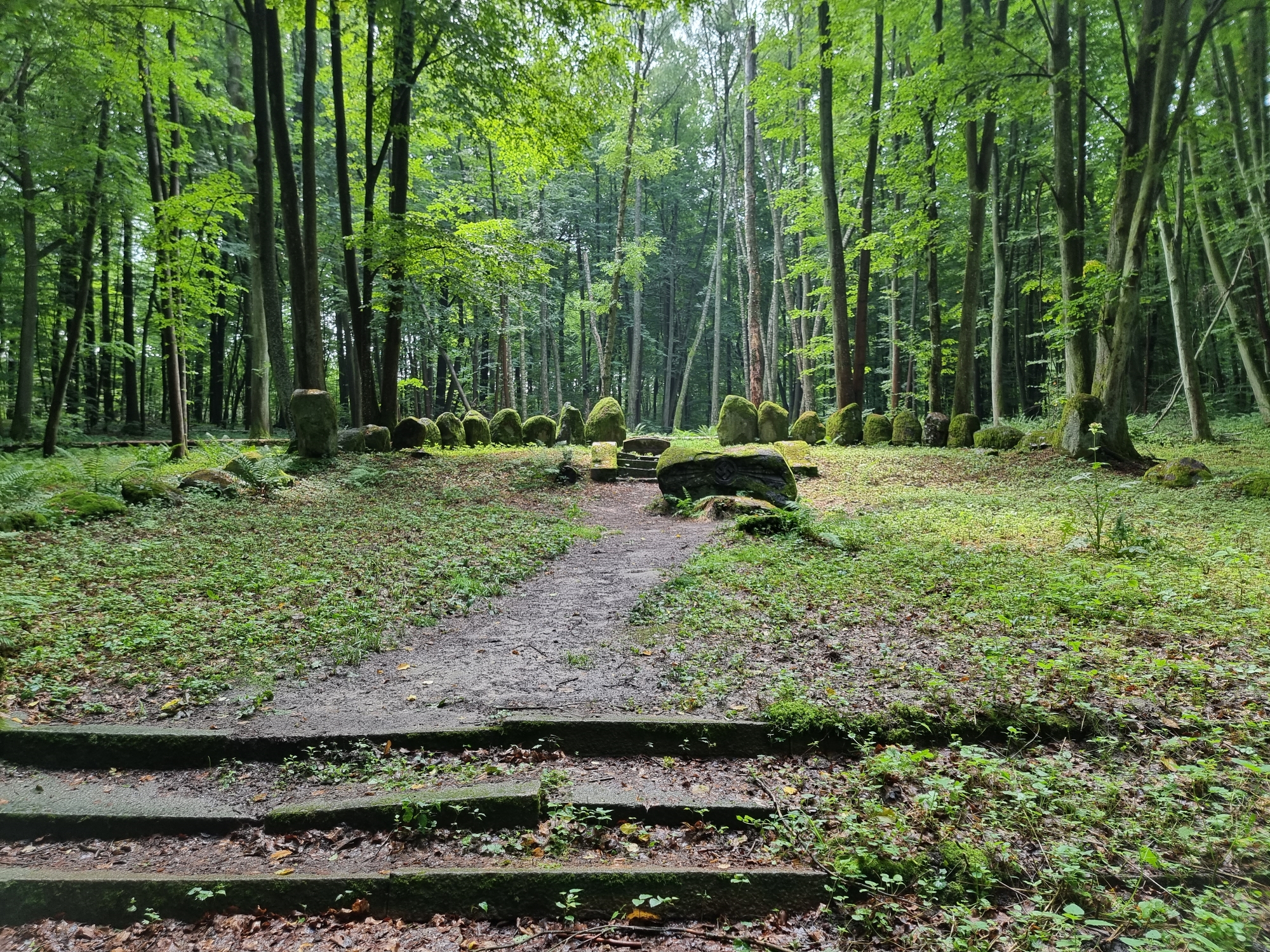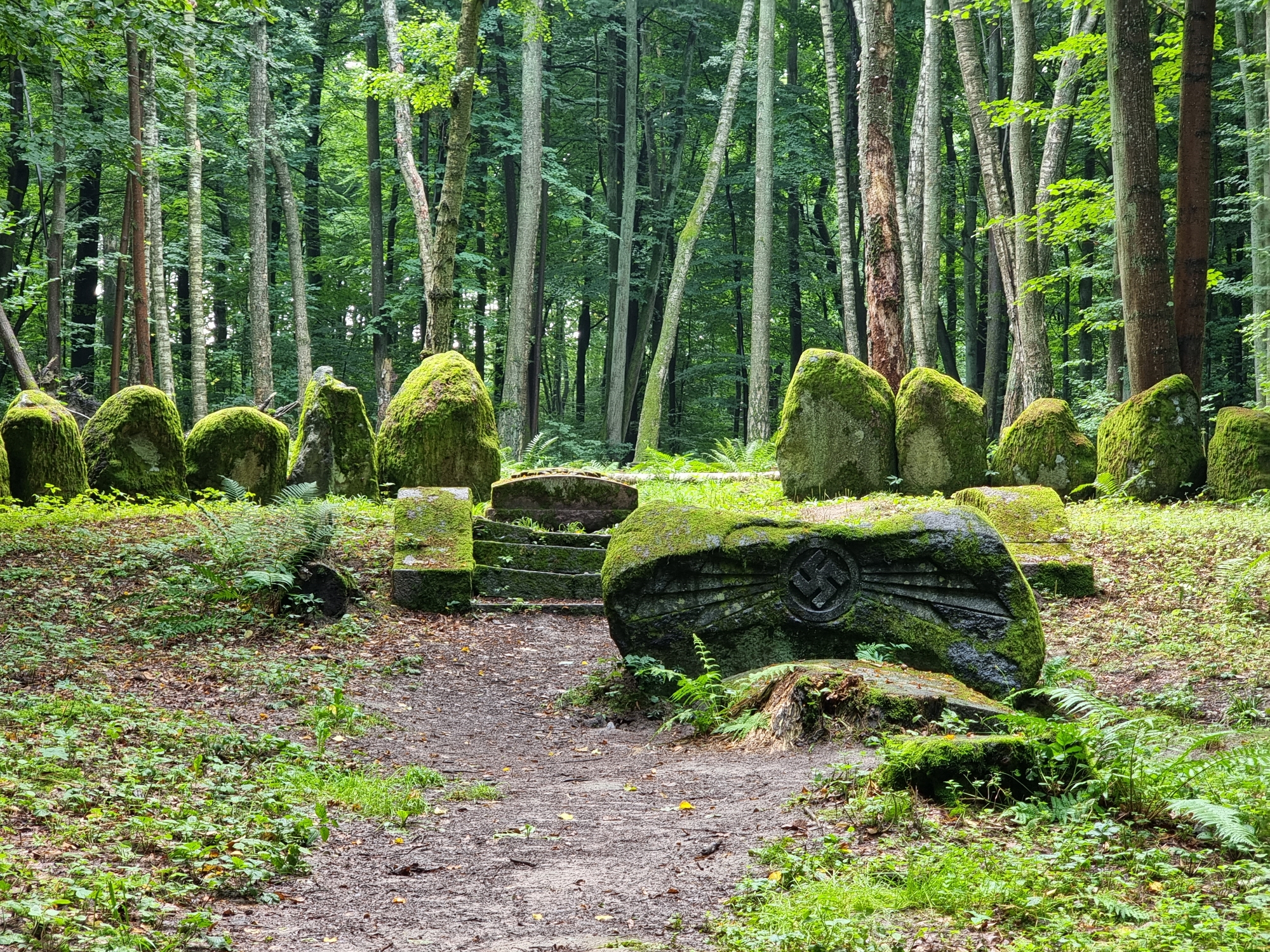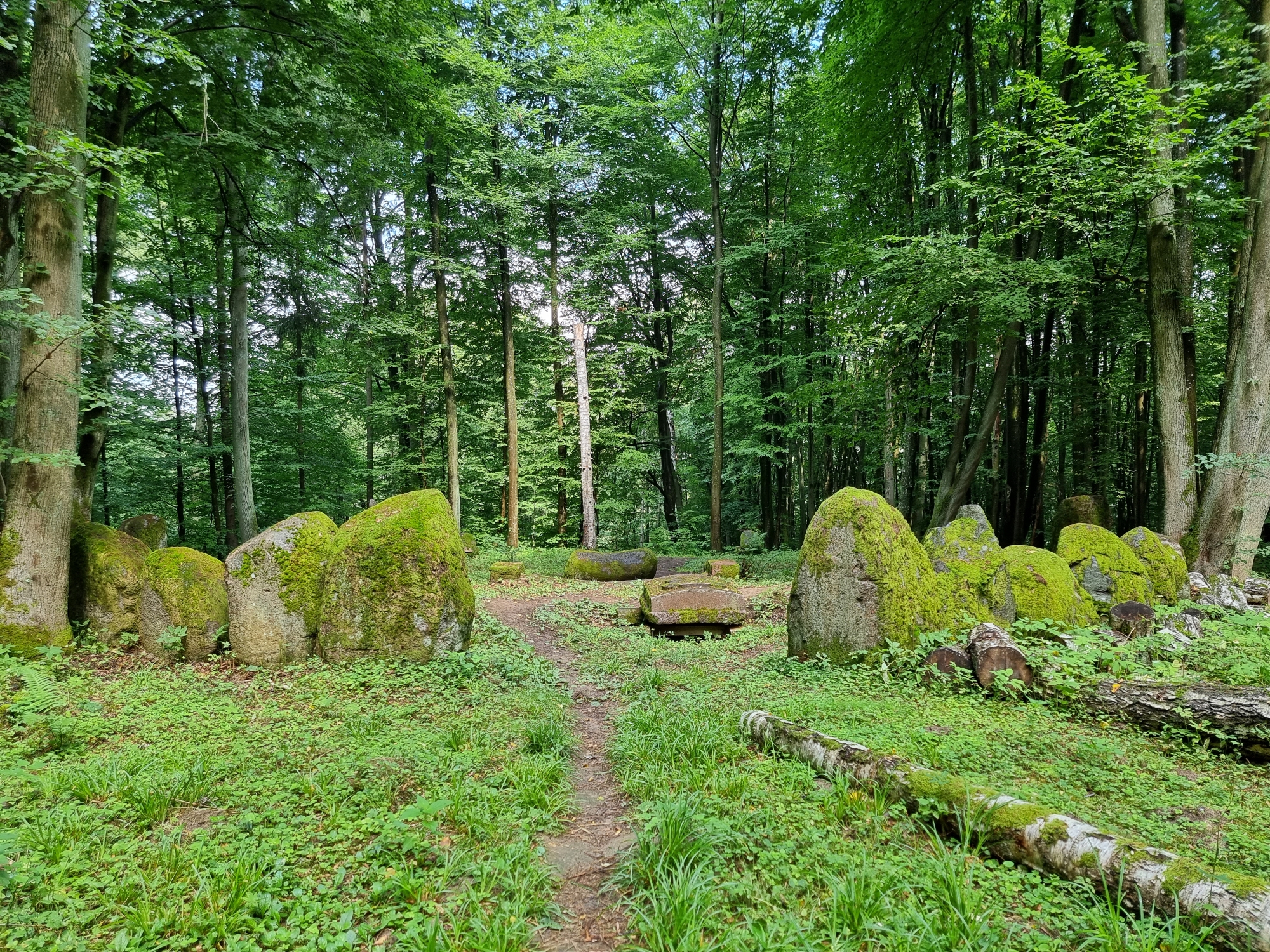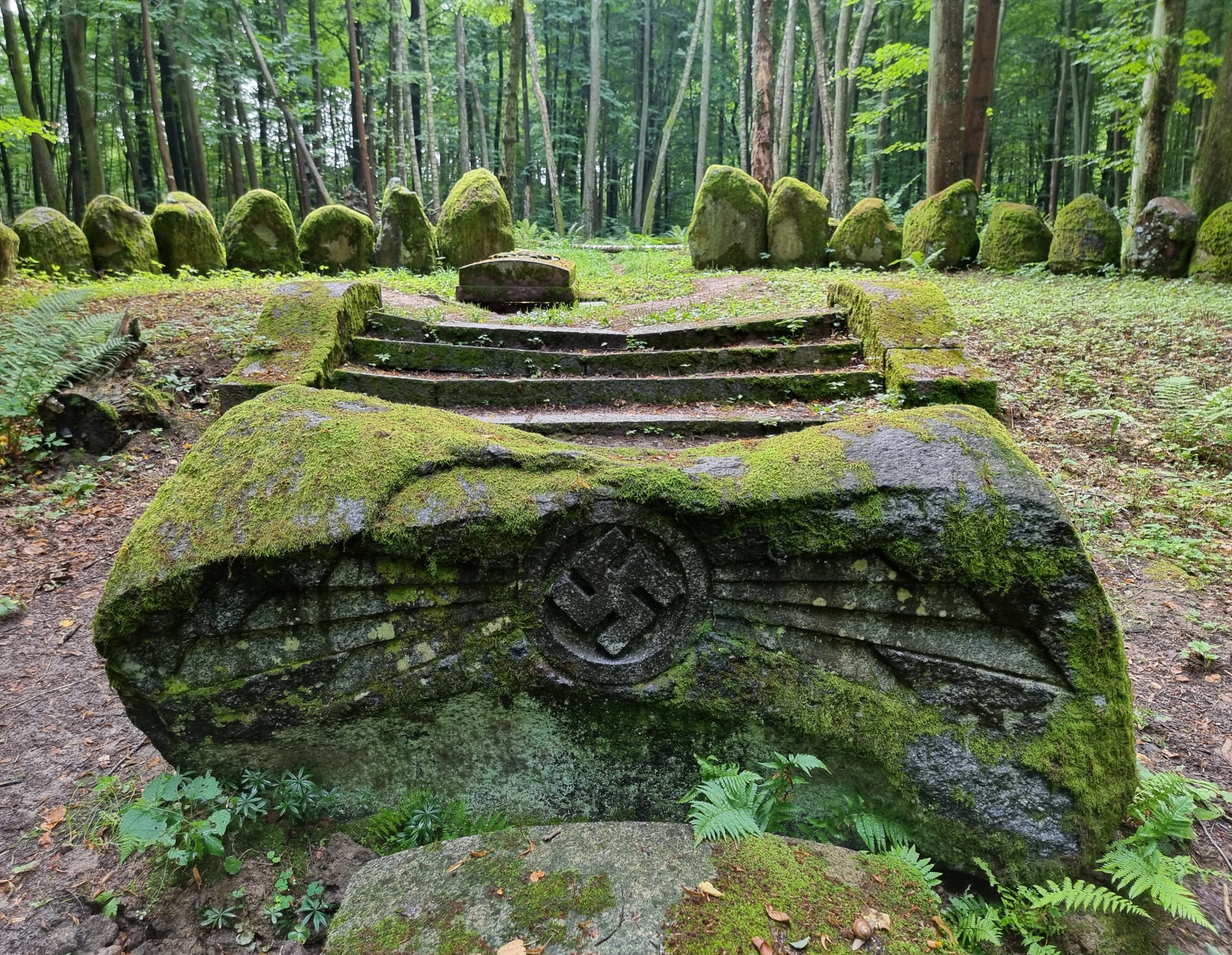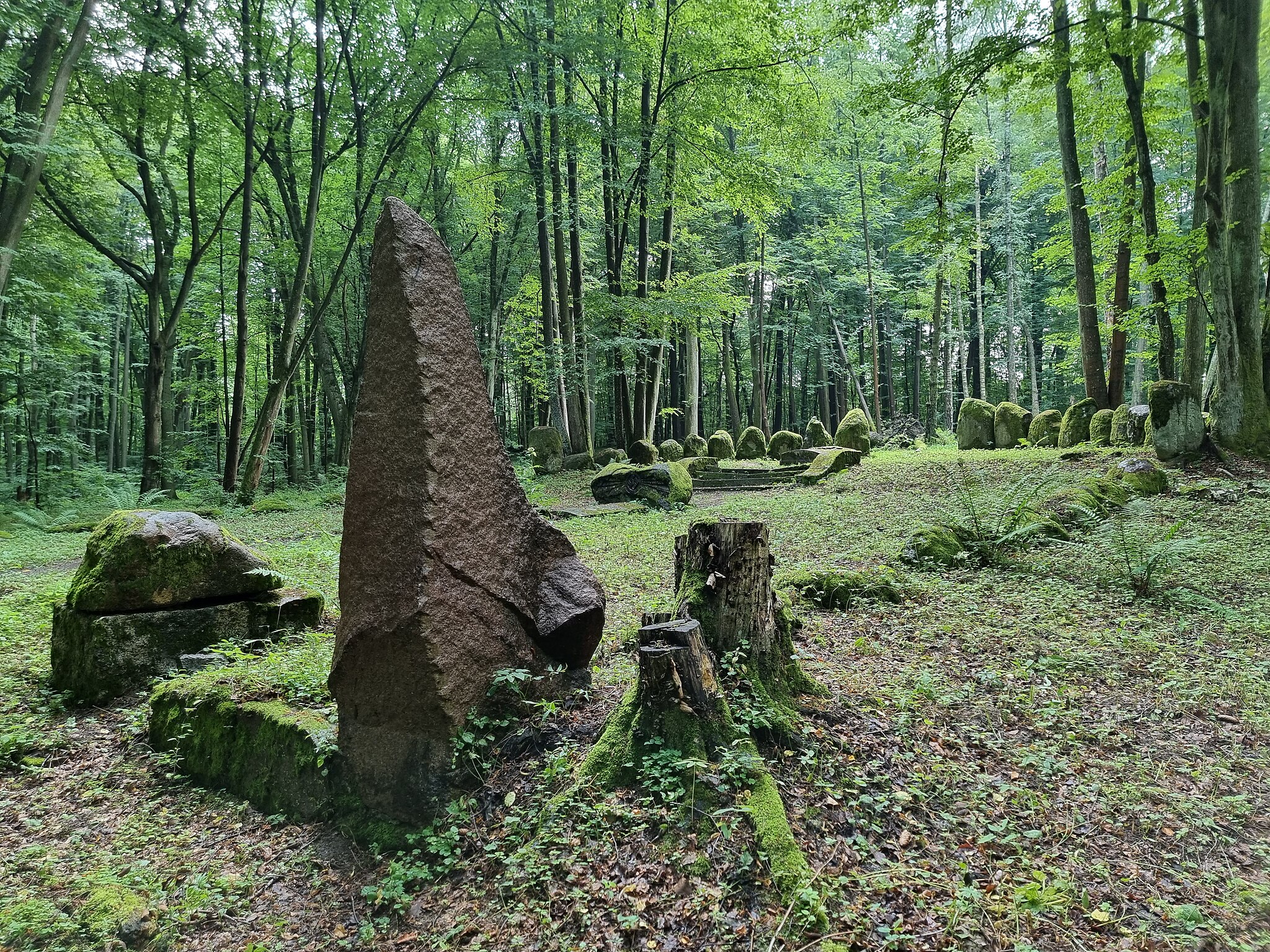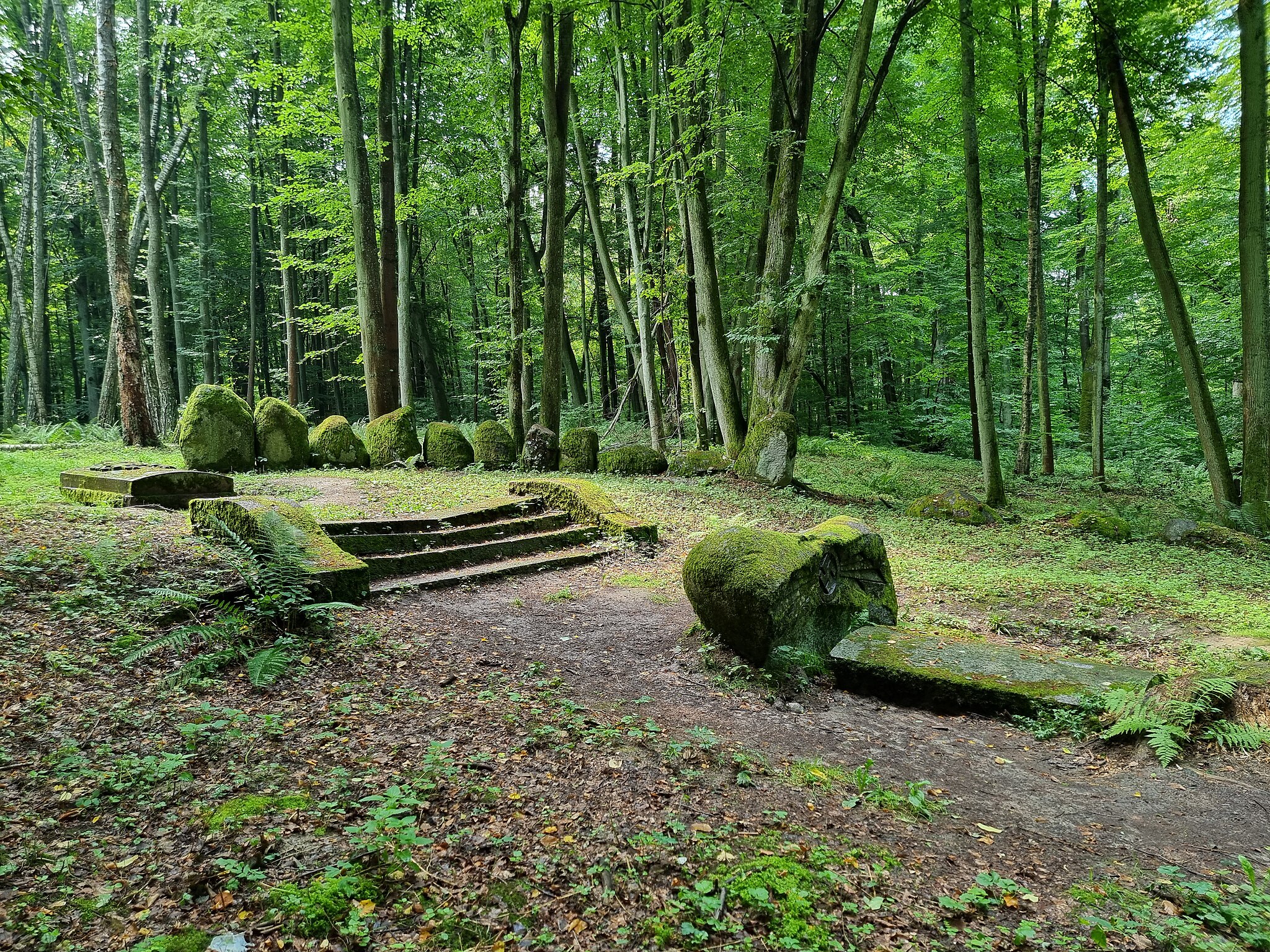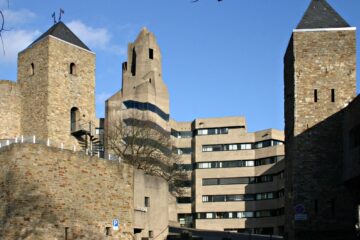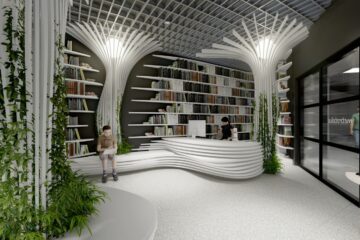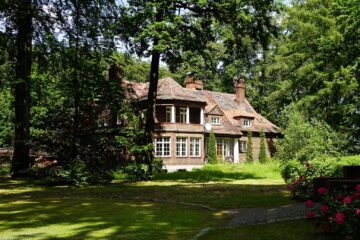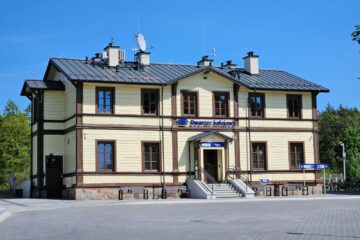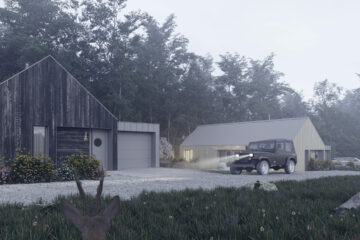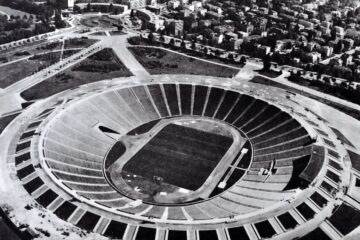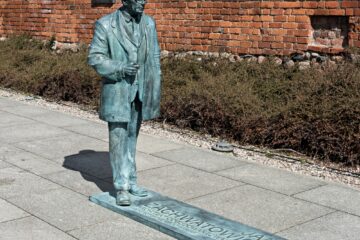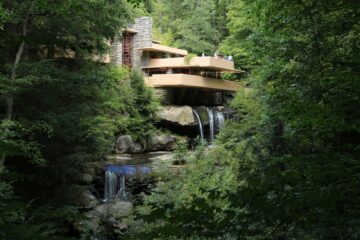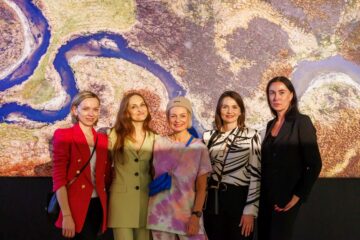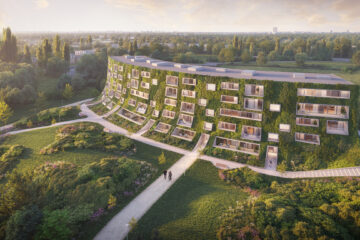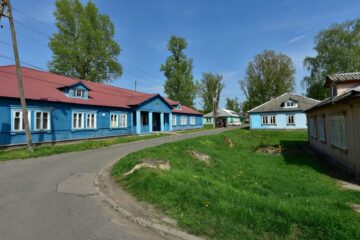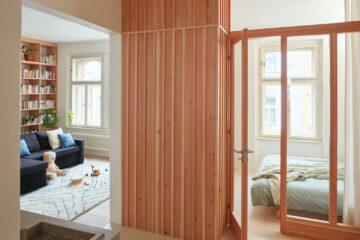The Warmian-Masurian Voivodeship is an area rich not only in Gothic castles and churches, but also in reminders of the great estates of the Prussian aristocracy. More than three hundred palaces and manor houses have been preserved there to this day. They are a material testimony to the former power of the families. One of the most interesting and at the same time most mysterious remnants of the Prussians is the cemetery of the Dohn family in Markow, which resembles a stone circle. The graves are still decorated with Nazi symbols and quotations from the Bible written in Gothic typeface.
The pseudo-megalithic cemetery was established in 1924 by representatives of one of East Prussia’s most powerful Dohn families, who had a manor house in nearby Markow. In form, this peculiar necropolis was intended to be reminiscent of ancient megalithic structures.
Cemetery of the House of Dohn. In the foreground, the slab of Christoph Friedrich, then the stone staircase, behind it the slab of Friedrich Ludwig. Photo: Creative Commons Attribution-Share Alike 4.0 International licence

The forest foundation is situated on a hill and consists of a stone half-circle formed by dozens of one-and-a-half-metre-high boulders, a stone staircase beside which hewn boulders have been placed, and other architectural and functional stone elements. Behind the cemetery, on the south side, is a birch circle, in the centre of which, on an octagonal pedestal, a wooden cross, now knocked down, has been erected. Friedrich Ludwig (1873-1924) and his son Christoph Friedrich (1907-1934) are buried there in two impressive tombs. They were counts of the zu Dohna family, owners of the manor house and extensive land holdings. The necropolis is unique not only for its location amidst the woods, but it is also a very rare example of a modern cemetery, which refers to the enigmatic stone circles of the megalithic culture, whose most famous representative is the famous English Stonehenge, dating from the Neolithic and Bronze Ages.
In the centre of the stone semi-circle is the tombstone of his father with the inscription: Friedrich Ludwig Burggraf und Graf zu Dohna-Lauck *4.4.1874 †1.7.1924. Below this is the symbol of good fortune – a four-leaf clover; above this is the crown-covered Dohns’ shield of arms with crossed stag’s horns. Along the sides runs a quotation from the Revelation of St John written in Gothic: So spricht der Geist, sie sollen ausruchen von ihren Mühen, denn ihre Werke folgen ihnen nach. Offb. Johannis 14.v.13. (Indeed, says the Spirit, let them rest from their toils, for their deeds go with them).
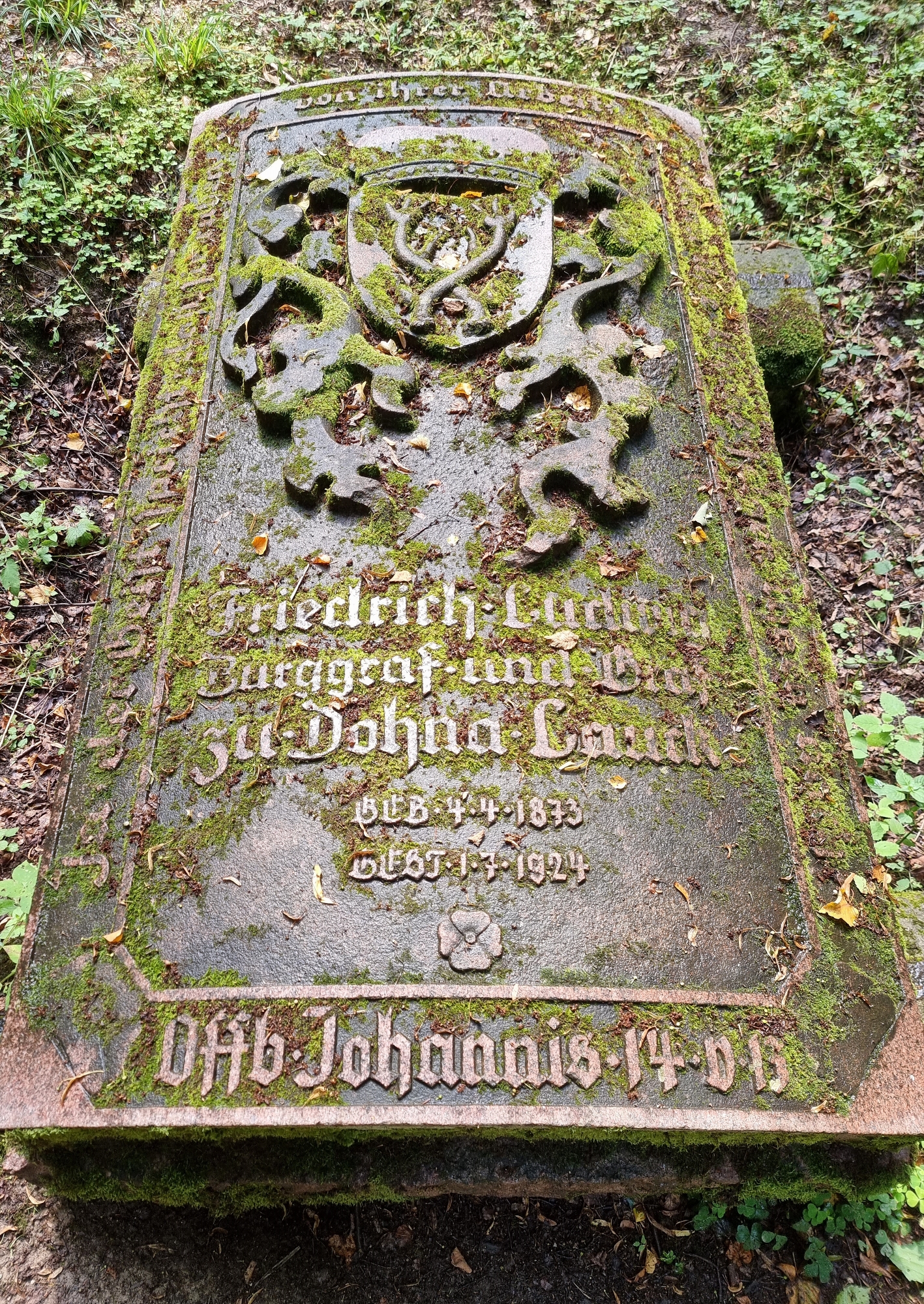
The son’s tomb is set below: Christoph Friedrich Burggraf und Graf zu Dohna-Lauck *12.12.1907-†3.9.1934 The young count died tragically in a car accident near Lake Constance. The funeral took place at night in Markow, by torchlight. Next to his son’s gravestone is a massive boulder with the inscription: Der Tod ist verschlungen in der Sieg. Cor.15.52 (Where is thy victory about death – First Letter to the Corinthians) and: Ich morte auf den Christus (I die in Christ). Below this is an inscription – Adolf Hitler. On the other side of the stone is engraved a huge swastika inscribed in a sun disc with radiant luminous streaks radiating from it.
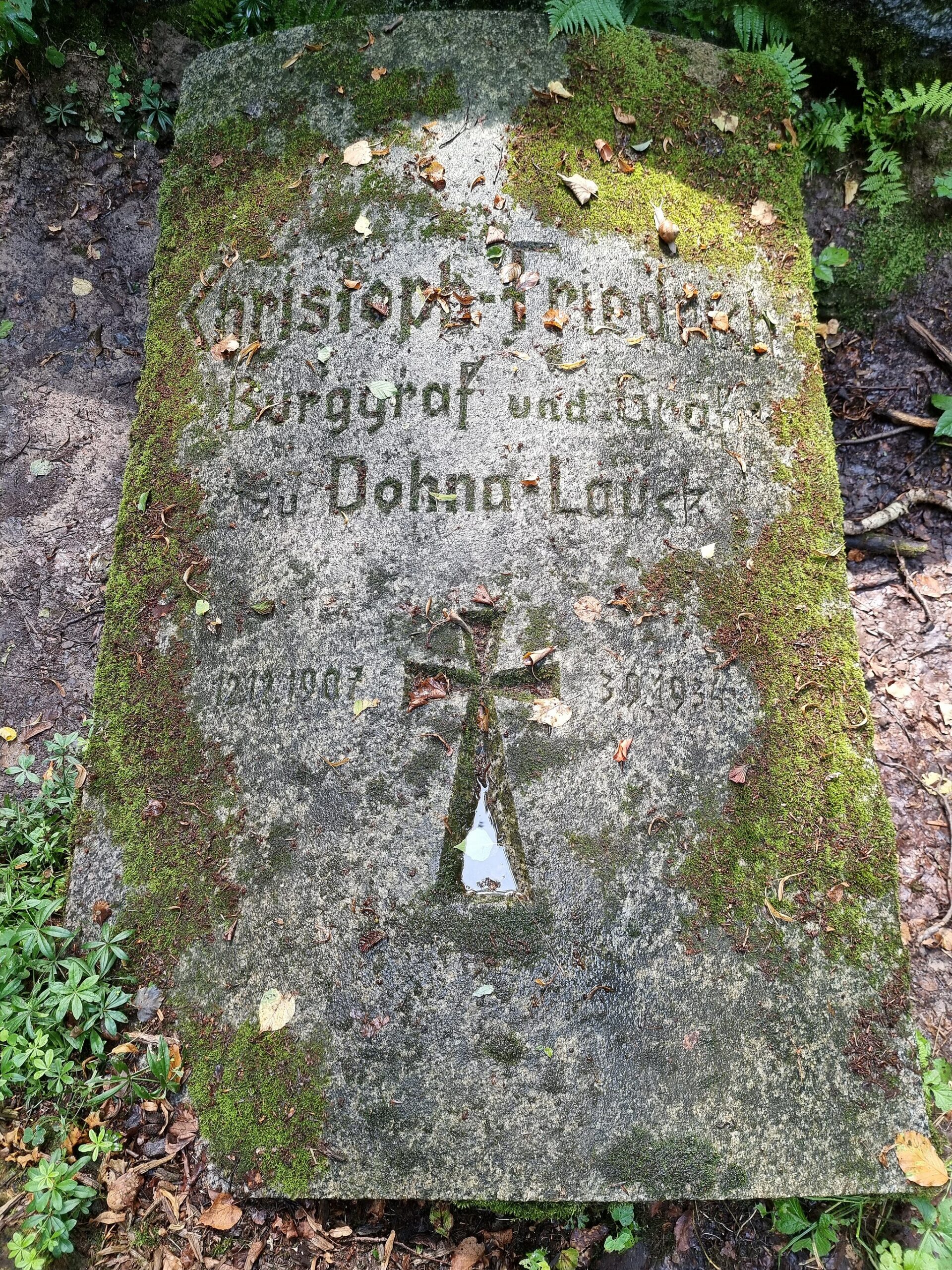
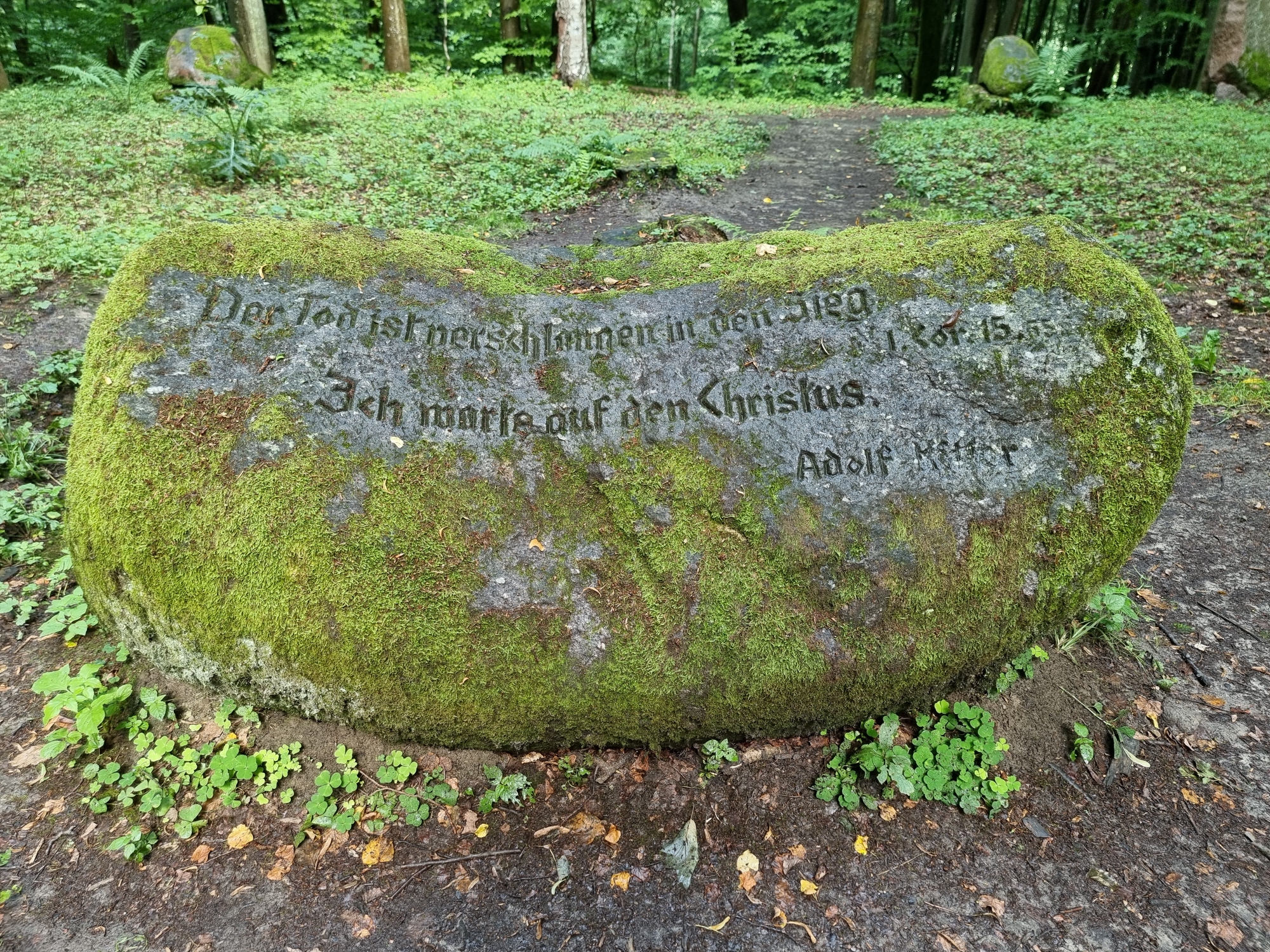
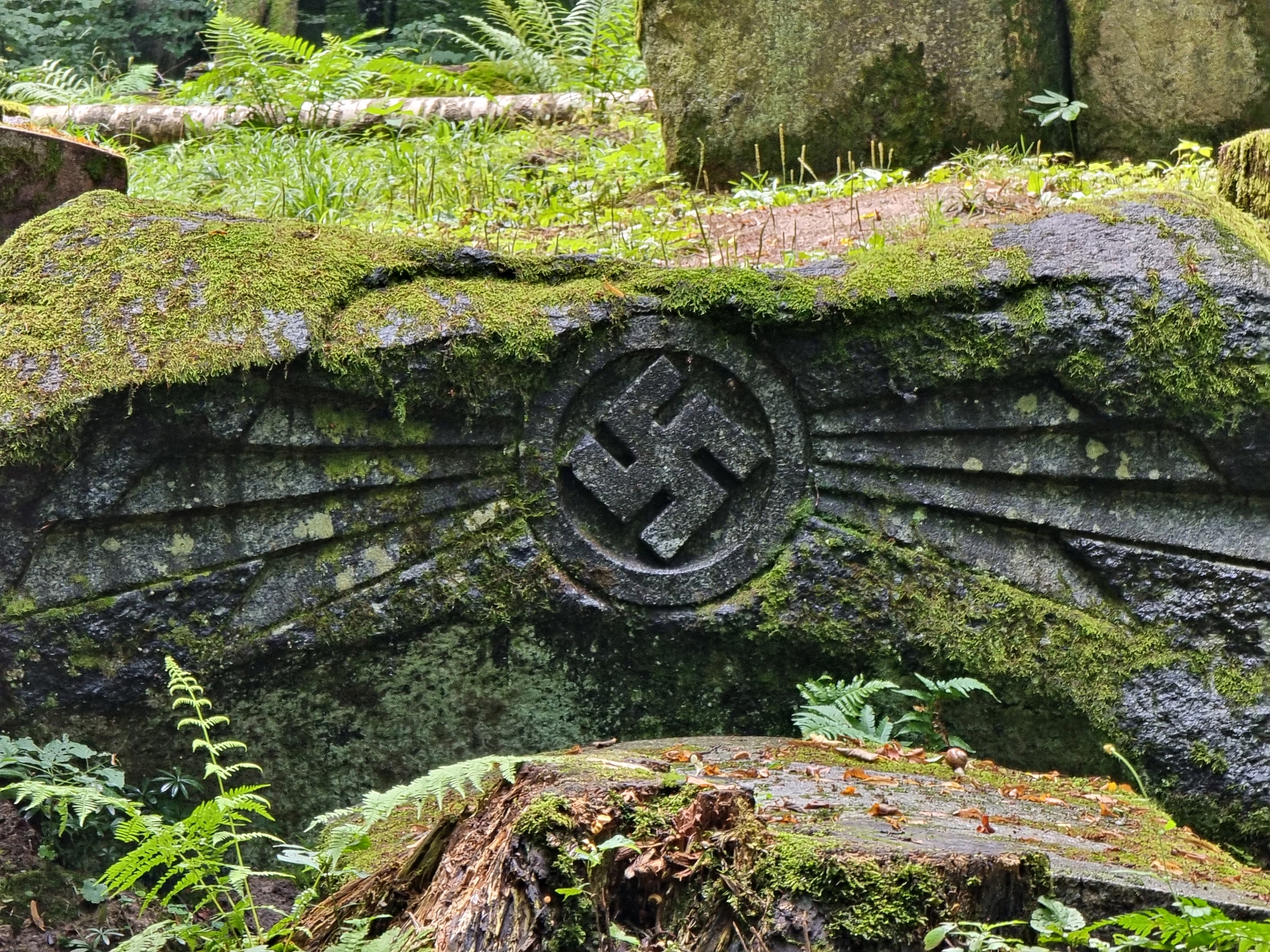
The Nazi symbols were not there by accident. Today, they are tangible proof of the Prussian aristocracy’s fascination with Nazi ideology, which had become infatuated with Hitler after the First World War. It was thanks to him – as was widely believed – that the agricultural-based economy of East Prussia was recovering from its decline.
The origin of the cemetery in such a form and in such a place is still a mystery today. The Dohn family crypt was located in the Evangelical church in Stružyn, and yet for some reason Friedrich Ludwig chose the forest wilderness as his resting place. Situated in the wilderness, the necropolis was also intended as a burial place for subsequent family members. Had it not been for the outbreak of war and the post-war change of national borders, the site would have been filled with more graves. There are suspicions that the aristocrat was inspired by the Masonic movement in which he was involved. The shapes of the circle and the octagon are important esoteric symbols, and this is the shape of the pedestal on which the wooden cross originally stood. However, the label of Freemason was worn by almost all Prussian aristocrats at the time, so the theory of the freemasonic origin of the new cemetery is not confirmed. It is also possible that Friedrich Ludwig zu Dohna wanted to refer to other, earlier peculiar burials or was inspired by the Gothic cemetery in Odry near Czersk.
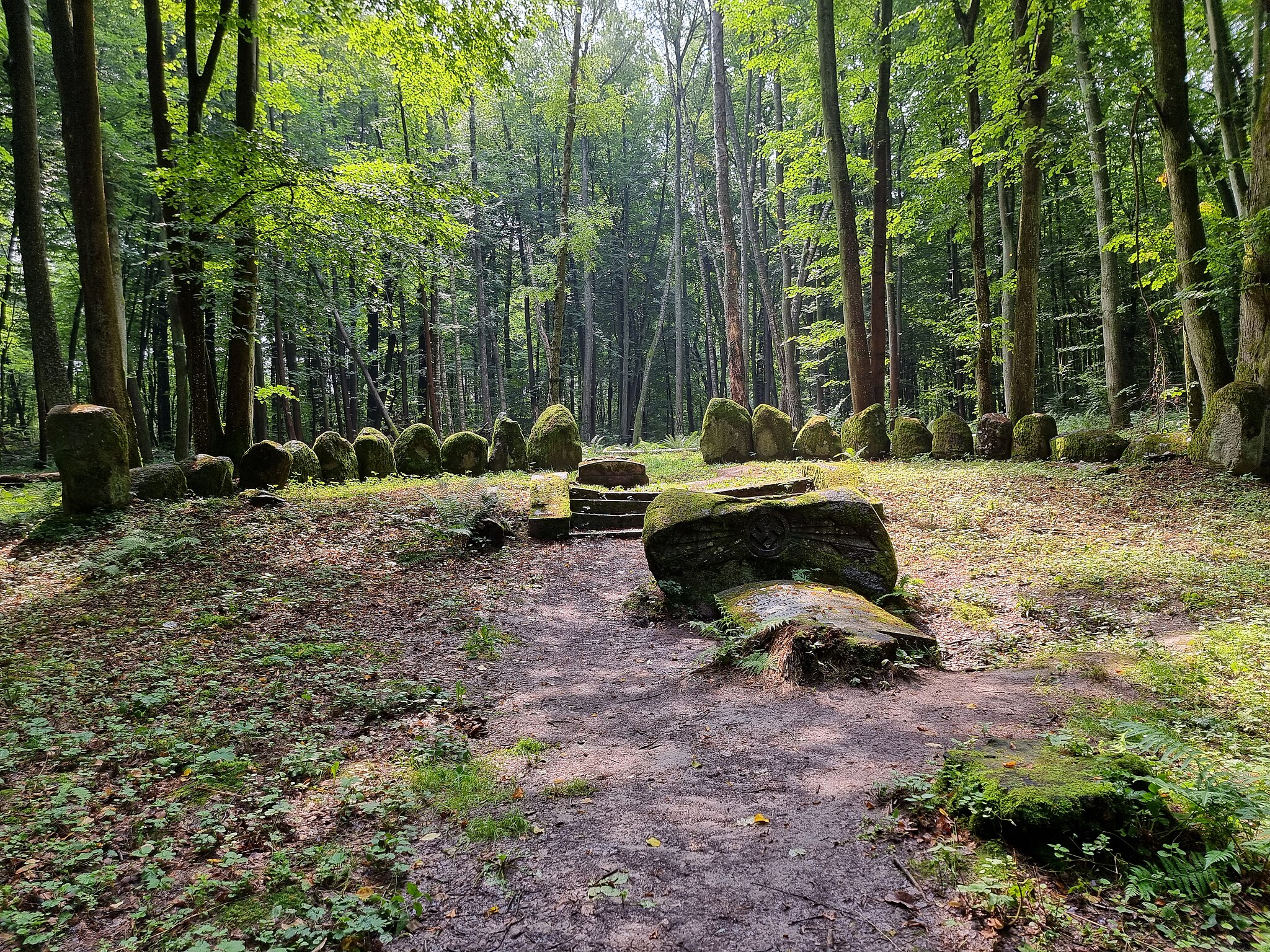
The Baroque palace of the Dohns was built in Markov between 1701 and 1704. In 1945, Red Army soldiers were stationed there. When they left, taking away a large art collection, employees of the state farm moved into the palace. They left in the 1970s, and over time the palace fell into disrepair. On its foundations, the new owner built a building imitating the old mansion.
The Dohn family cemetery, hidden in the forest thicket, escaped the destructive machinery that removed all traces of Prussian activity in the area.
Source: national-geographic.pl, focus.pl
Read also: Architecture | Monument | History | Sacral architecture | Architecture in Poland | Stone | Interesting facts


